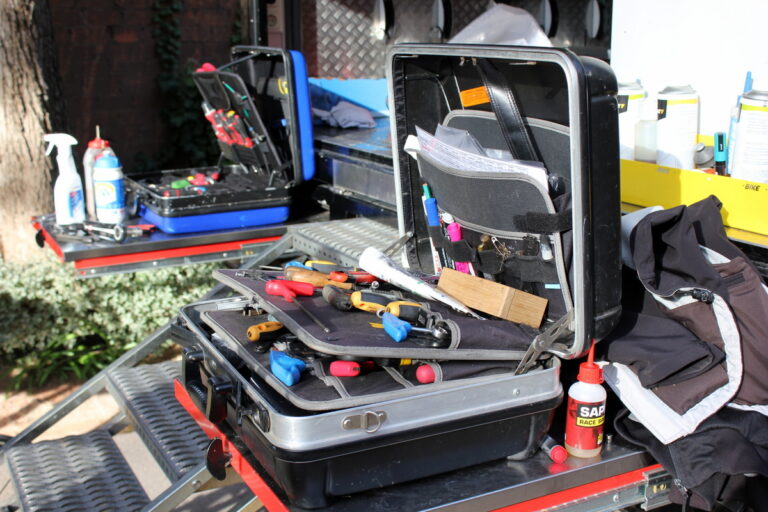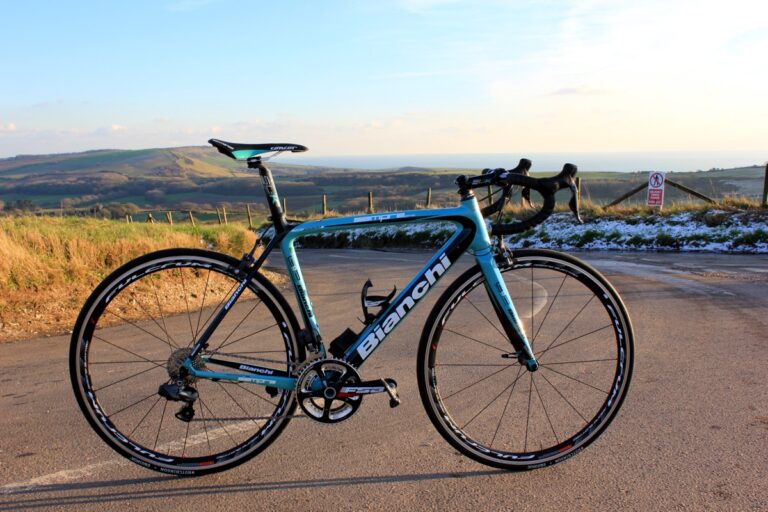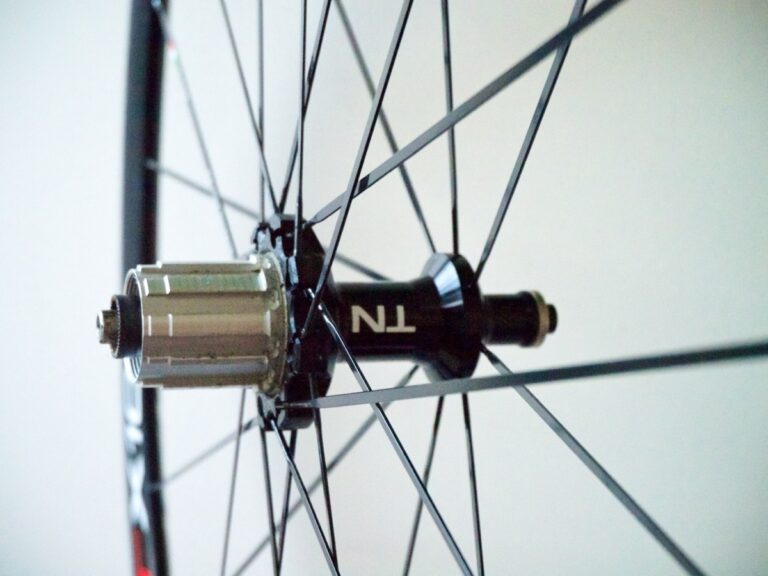It’s the final term report for the BKool, and the card is marked with a single line: “good work, lots of potential, will only improve.”
In many ways it is a simple as that, but the depth of product within the BKool system is where much of the motivation for training will spring from.
Let’s start with the basics.

The BCycling unit is a simple affair we described generally in our ‘first look’ last month. The frame is hinged to allow the rider’s own weight to rest on the roller, and resistance is provided by a suitably quiet electromaganetic system encapsulated by an aerodynamic-looking clamshell cover. The weight of the flywheel is such that, coupled with the weight loading, a road-like feel is easily achieved. Your computer will tell the electromagnetic system what resistance level to set.
Last time out, I described the various niggles with getting the BKool software up and running (no fault of the team in Spain as such, merely the lack of Apple compatible software). Now we are rolling, I can safely say that the software has been fault free and easy to understand. We are assured that a Mac compatible version is on it’s way.
Our package starts at a penny under £400, and it includes the turbo trainer, quick release, wheel raiser block, a cadence sensor and an ANT+ USB dongle. Combine this with a monthly subscription to the BKool website and a heart rate monitor and you are good to ride. All the software for your computer, and iPhone (if you want to start logging your actual outdoor rides and saving them to BKool), is free and easily downloadable.
So assuming that you have grasped the general parts of the system, and have set up you bike and body with cadence and heart rate what then? The internet is the answer. Logging onto the BKool website allows you to access your profile and begin to plan a session.
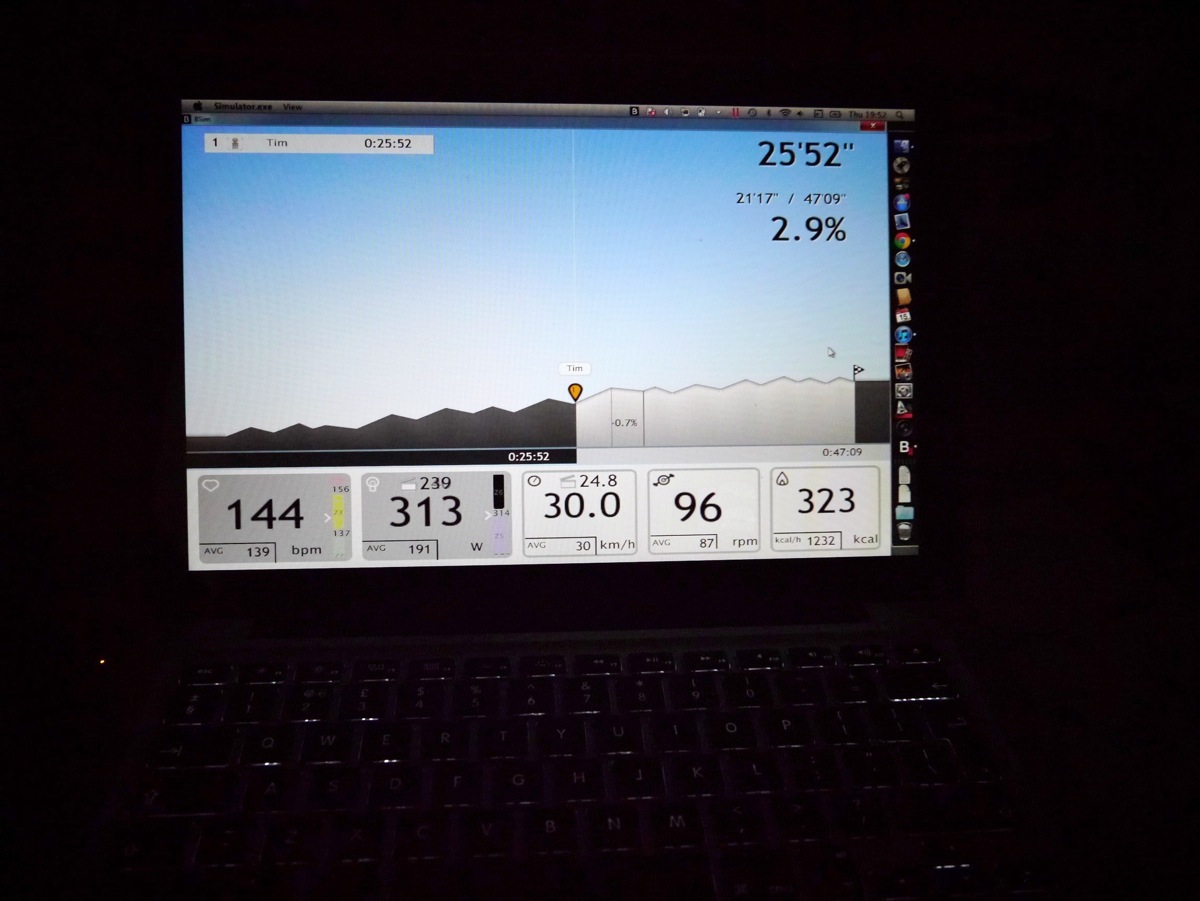
Will it be a training spin or do you want to ride a test course to see if you have improved? Do you want to ride solo or multi-player? Do you want to do a customised ride for you BKool session (based on the knowledge they have about you, height, weight, bike, power output, goals)? A flat velodrome ride? A GPS route: yours, or one somebody else has uploaded? Or do you want to immerse yourself in a real world cycling video (first person POV, at your pace). Let’s not even go down the multiplayer route right now, except to say that all the options listed out above are also available as races against fictional, digital cyclists or real world adversaries.
That gives you a look inside the world of BKool, which is why we believe that this is a great motivational trainer, and one that will keep you occupied for not only the winter season, but also throughout the race/sportive/summer season. Whatever your goals, BKool is seemingly there to help.
Having finally made your selection, you load up the BSim software. It communicates with the BKool website and uses the ANT+ dongle to send and receive information from you and the trainer. The BSim is the heart of the trainer on your laptop; giving you loads of data, telling the electromagnetic sensors whether to ramp up or down the resistance and recording and sending your workout back to the BKool site.
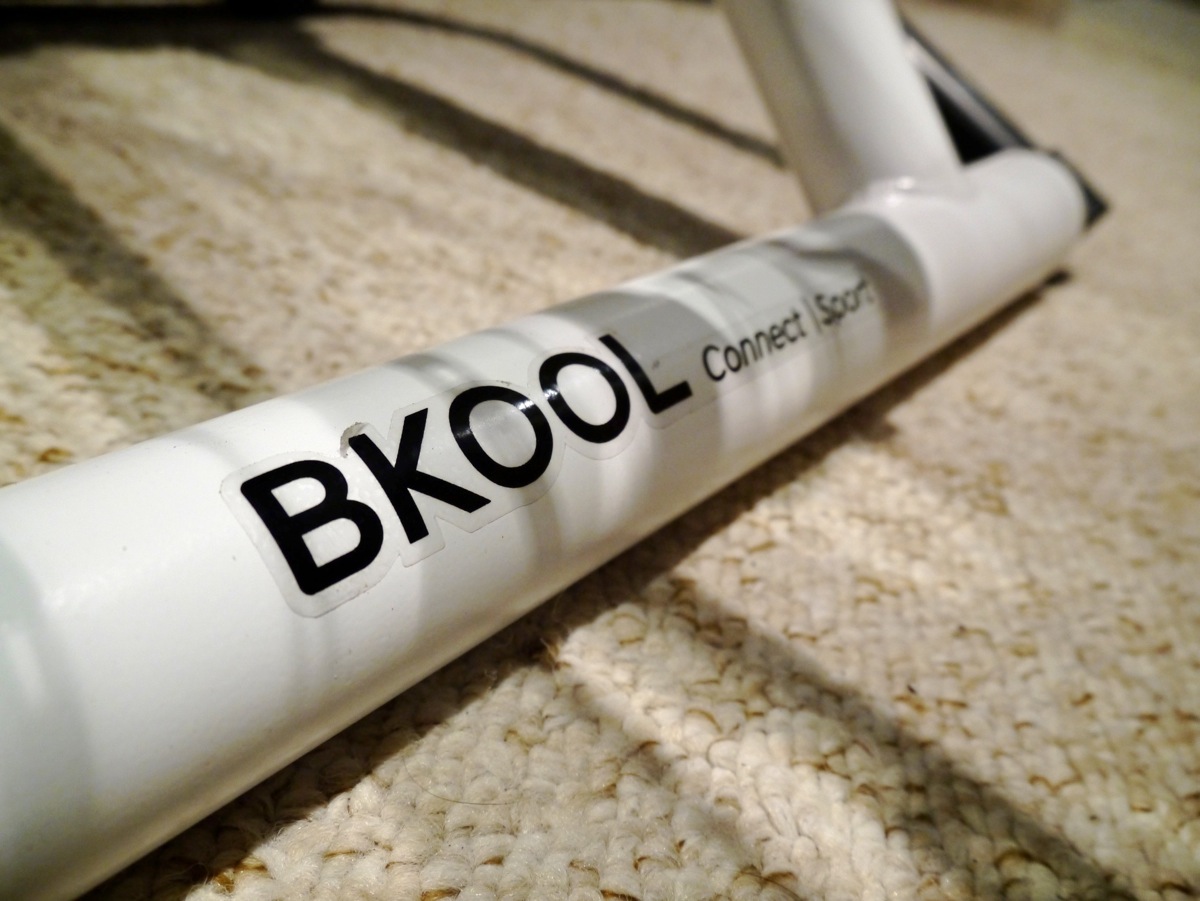
During a workout there is a great selection of data to choose from: heart rate, cadence and speed as a starting point, but also a power readout which is extremely useful. Another handy feature is the BKool’s display of red zones above and below the targeted green zone of your training programme. It’s a simple device that allows the rider to remain focussed on their goal despite being blinded by sweat and exertion. It’s a neat ide,a and one that to us indicated the depth of thought that has gone into the whole system.
Post-workout. there is also a huge range of information on offer to slake the thirst of all bike geeks out there. Graphically, it’s not quite as lovely as Strava, for example, but it does give you all the information you need to monitor your progress and judge improvements.
BKool is in some ways the more sophisticated brother of Strava, logging miles and competing against other cyclists (I prefer to call it checking), is part and parcel of traditional group rides before the advent of computers and the digital age. Even on a non-competitive ride there is always the single hill, or the casual chat as the road climbs, a check of pace and rhythm against breathing.
Where Strava scores with KOM, BKool inspires with fitness levels and tests; the seven levels from Amateur to Elite, each one tantalisingly close to the previous, but moving up a level requires dedication and a will to train and put in the mileage. It is a different way to compete.
The BKool has a huge potential, the storing of data online, and ever expanding range of courses and sessions makes this a fantastic tool. If you lack inspiration and motivation then this could be the solution. I was certainly sad not to get more sessions on the trainer, but comparisons have to be made, and competitors tested. The BKool did very well against its more traditional opponents. Now all I need to find is a BKool sync’d with a Sufferfest, and my winter is complete.


